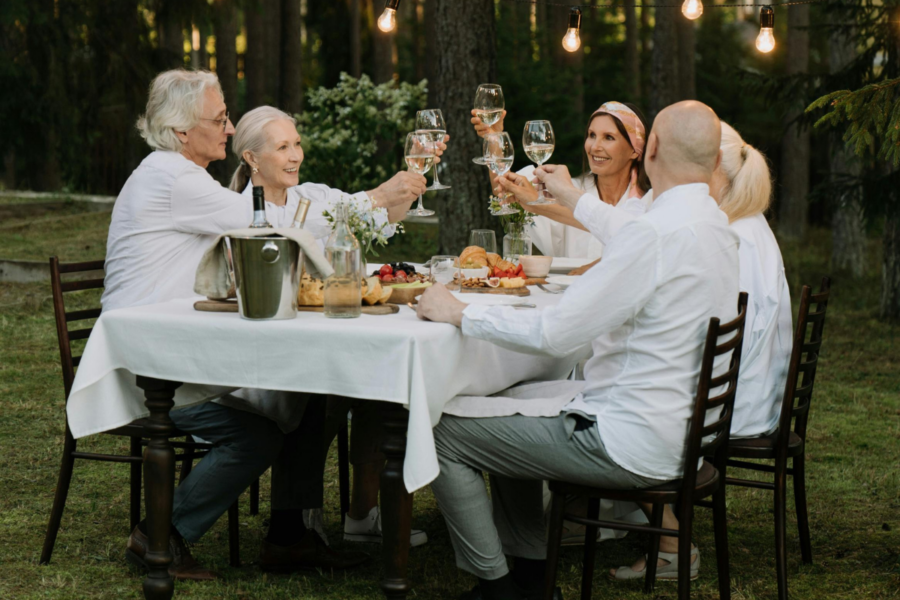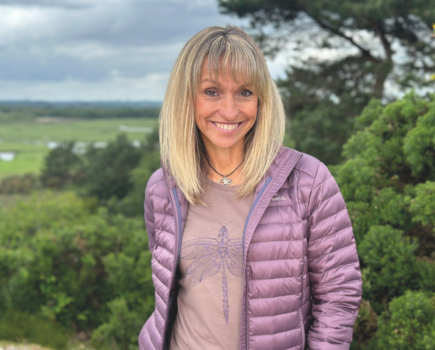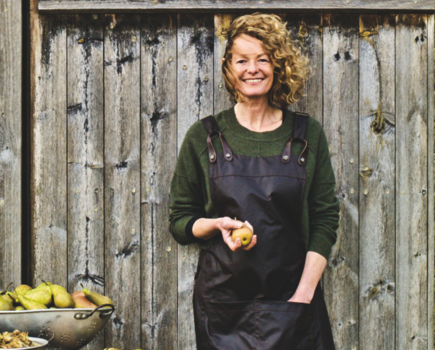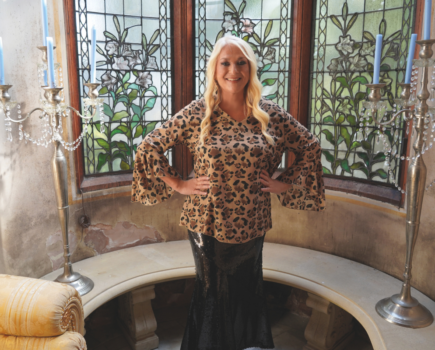With a loneliness epidemic hitting hard, would you consider living communally to fend off isolation? Cohousing, retirement villages or shared houses could be the future of independent living as we get older, but what’s it really like being part of one big boisterous community? Angela Kennedy investigates.
If you’re feeling lonesome, you’re certainly not alone as 1.4 million people aged 50 and older admitted they were often lonely. It’s a black hole that’s easy to fall into; for example, due to retirement, if your partner has passed away, or if friends or family have moved away.
Loneliness is dire news for health because being socially disconnected is as bad for you as smoking or heavy alcohol consumption. Plus, those who feel lonely are 50 per cent more likely to die prematurely than socially engaged people. Interestingly, over-50s are five-and-a-half times more likely to be lonely if they don’t have someone to talk to. In other words, having people around you for a good chat is vital for wellbeing.
That’s where communal living comes in. In fact, being part of a cohousing community gives you a mental health boost and lowers anxiety compared to traditional neighbourhoods, according to a recent study.
‘Communal living builds up meaningful relationships where strong bonds can grow. Collaboration of skills gained throughout a person’s working life can be a wonderful asset to the group. Socially, it opens up possibilities for shared meals, walks, activities or even holidays.
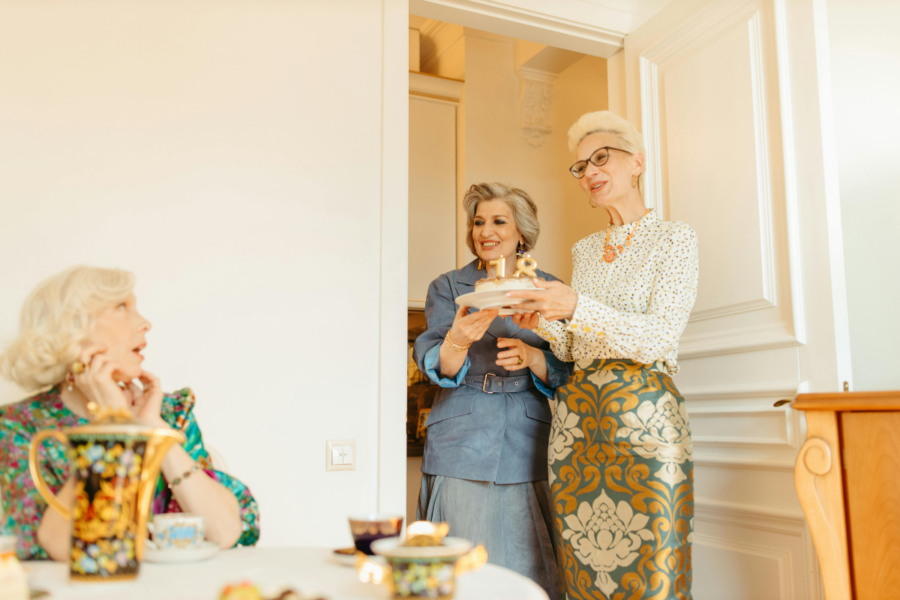
The emotional support of community living brings peace of mind to know you always have a valued support network. It’s a bit of a win-win,’ says Dr. Annette Greenwood (annettegreenwood.com), who specializes in helping women challenge limiting habits or beliefs to create happier lives.
One highly successful example of an all-female community of over-50s is New Ground Cohousing in London. Cohousing is a group of self-contained homes with additional communal spaces such as gardens, arts rooms, and dining areas.
So, you get a good balance between privacy and community. Residents make decisions together on managing the community, share social activities, and eat together regularly. New Ground’s aim is to “promote neighbourliness, combat isolation and offer mutual support” and “share a determination to stay self-dependent, young-at-heart, and active.” Residents are also encouraged to become active in the wider local community.
Charlotte Balazs, 70, a former Medical Royal College administrator, moved to New Ground in 2016 because she wanted that balance of community with independent living – as well as the benefits of being part of an all-female group. ‘I chose New Ground as I could be part of a community but also continue living my own life with my own front door.
As women, we have commonality, and of course, we have varied life experiences, but we are now in control of our decision-making and future. We do this as a mutually supportive community, which is such a heart-warming and reassuring way to live. It really is a no-brainer as a good way to live in your third age, with mutual support, sense of purpose, stimulation, and friendship – it’s a good life,’ she says.

World of your own
Retirement villages are larger-scale, purpose-built sites for over-55s, which are self-contained apartments or houses with communal areas and regular social activities on offer, such as trips, crafts, games, or fitness. They are usually positioned close to towns so you can easily access shops and public transport, and you pay a service charge to cover things such as security and building maintenance.
Burghley Retirement Living has four retirement villages in the UK offering one- or two-bedroom luxury apartments, with smaller sites having about 37 apartments, while the bigger sites have up to 64.
The housing is designed with the needs of older people in mind, meaning appliances and plug sockets are positioned for easy use, there’s non-slip bathroom flooring and easy-access showers, and buildings are thermally insulated with double glazing to reduce energy costs. There are security measures, such as video-door entry, CCTV surveillance systems, and security locks on windows. Gardening, window cleaning, and building repairs are included.
‘As people age, their circle of friends gets smaller and loneliness creeps in. We want our owners to be active in the community, making and maintaining friendships, because we see first-hand how important this is in later life. Homeowners have opportunities to participate in group activities, events, and clubs, promoting a sense of belonging and companionship.
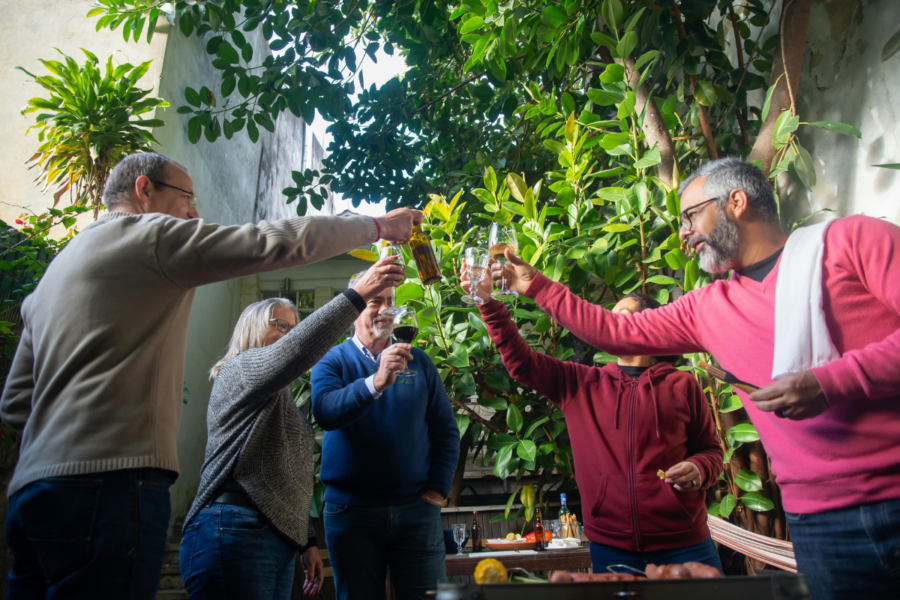
Regular interactions with neighbours, our lodge managers and participation in activities can positively impact mental health and emotional wellbeing,’ says Marie Buckingham, development director at Burghley Retirement Living.
In general, retirement villages may be a good option if you want to downsize and live in a supported community among people of a similar age with activities on offer.
However, it always pays to do your homework before you jump in, as some retirement sites have been criticized for charging high service costs, having poor resale value, leaseholder restrictions, and additional ground rent costs, according to the campaign group, HomeOwners Alliance.
The good life
Yet another type of communal living is the big house communities, which used to be associated with the hippy communes of the 1960s and 70s, although most have long thrown off that stereotype. They are now called intentional communities, meaning people who have come together by choice rather than chance.
For example, when you move house in the usual way you don’t pick your neighbors, but big house intentional communities often have shared beliefs whether that’s spiritual, political, or just a desire to live in a certain way with like-minded people.
Of course, the sense of intention also applies to cohousing and retirement villages, but big house communities differ as they are a more immersive experience. You might have a private room but share other facilities such as the kitchen and bathrooms, although many big houses have been converted into separate units too.
You’d also be expected to be fully involved with the community from decision-making to cooking, cleaning, and gardening by rota, as well as having access to lots of social activities. If you are a very private person, this is probably your worst nightmare. But for others, a huge attraction of this type of community is that it’s like living with one big family. It’s multi-generational living too, as residents range from families with children to retired people – so you get the mental and emotional benefits of mixing with all ages.

The Findhorn Foundation is one of the biggest and oldest intentional communities in the UK. It was founded in 1962, near the north-eastern Scottish coastal village of Findhorn, as a self-sustaining eco-community with spiritual roots. It has a big house as part of the site but it also has an eco-village sustainable development of about 125 houses.
Marilyn Hamilton, 76, moved to Findhorn in 2018. ‘I felt called to move to Ecovillage Findhorn after my husband died in 2017 and I attended a retreat there. I love living in a village environment, where I can walk out my door to the shop and will know most people I see. The familial/community bonds are tangible and strong. I also love walking out through my small garden into nature. The dunes, forest, beach, and lagoon all energize and support me. This is a community that is nourishing and inspiring.’
Of course, sharing your life with a big group of people won’t always be sweetness and light – community decision-making and general differences can lead to conflict. ‘Dealing with disagreements generally comes down to being willing to have difficult conversations with others in a mutually trusting and respectful way,’ says Marilyn.
Heather Holve, 59, is part of the community at Postlip Hall – a beautiful listed Jacobean manor house in Gloucestershire. It has 15 acres of land with organic vegetable gardens and livestock. It’s been divided into separate units so it’s essentially cohousing within a big old house and it is run as a housing association with monthly meetings for community decision-making. ‘I love the space and the community at Postlip.
‘We share a manor house with a kitchen garden, chickens, pigs, and sheep. You bond and care for your community. You can be very different people in your interests and professions, but you have a shared will to collaborate and be worthy custodians of the building and the land. We make time to nurture these relationships – the summer is great for sharing a barbeque or pizza evening,’ says Heather.

Group decisions
When it comes to conflict resolution, patience, openness, and respectful communication are the keys to harmony. ‘Not everything in a community is plain sailing and Postlip has seen its fair share of conflict. With 50 years of residents moving in and out there is always flux on group dynamics and how the group gels.
We make decisions through consensus so we need to keep lines of communication open and be prepared to be patient. We have agreements so everyone is clear about commitments to the community and what is good and bad communication. We also have a facilitator who helps us be open and fair about differences,’ says Heather.
Residents at Postlip Hall are aged from one to upwards of 80, so there’s a real big family vibe with plenty of room for the talents and wisdom of all ages. ‘One of our founders, who is in her 80s, has more than 50 years of experience at Postlip, which is a wonderful resource. But even more impressively she remains open to new ideas and is willing to try new ways. Plus, she has a hilarious set of anecdotes on Postlip and the people who lived here,’ says Heather.
While communal living isn’t for everyone, it does sound like a smart way to live as you get older if you enjoy company, collaboration, and shared activities. But it’s certainly not some sort of utopia. ‘Communal living can bring challenges. Sometimes decisions are taken by the majority, so if you are a person who prefers complete autonomy, bear this in mind.
If you prefer a very private life this may not be the best fit for you. With so many different people and personalities, conflict can arise. The question to ask yourself before deciding to embark on this journey is, do the benefits outweigh the negatives?’ says Dr Annette. Only you can answer that.
Words: Angela Kennedy.

